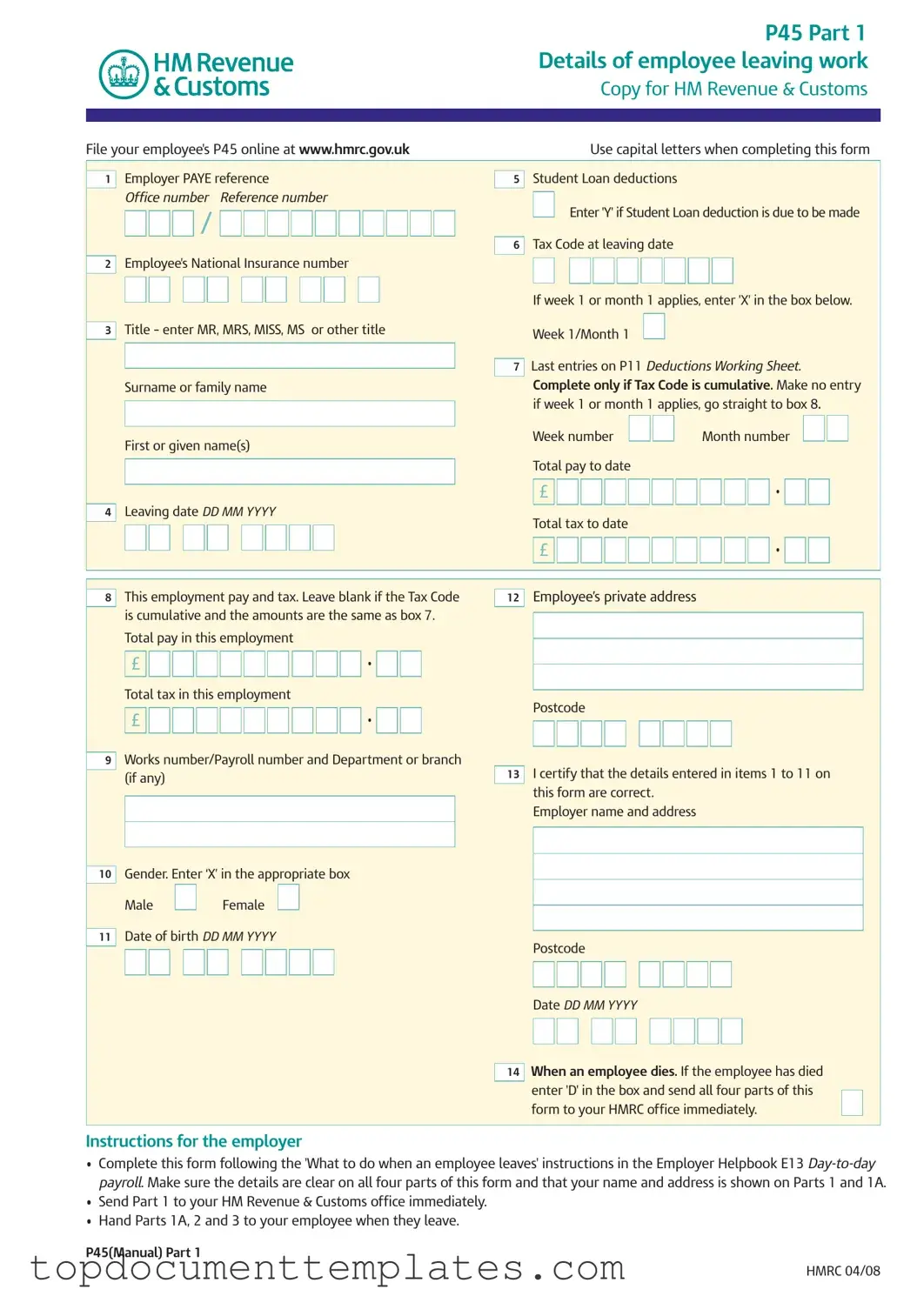The P45 It form is a critical document for both employers and employees in the UK, particularly during transitions between jobs. This form consists of three parts: Part 1, which is sent to HM Revenue & Customs (HMRC); Part 1A, which the employee retains; and Parts 2 and 3, which are provided to the new employer. Each part includes essential information such as the employee's National Insurance number, tax code, and details about pay and tax deductions to date. Employers must complete the form accurately, ensuring that all sections are filled out clearly to avoid any issues with tax calculations. Employees should keep their copy safe, as it may be needed for tax returns or to claim tax refunds. The P45 also includes instructions for handling student loan deductions and guidelines for what to do if the employee has died. Properly managing the P45 form ensures compliance with tax regulations and facilitates a smooth transition for employees moving to new positions.
